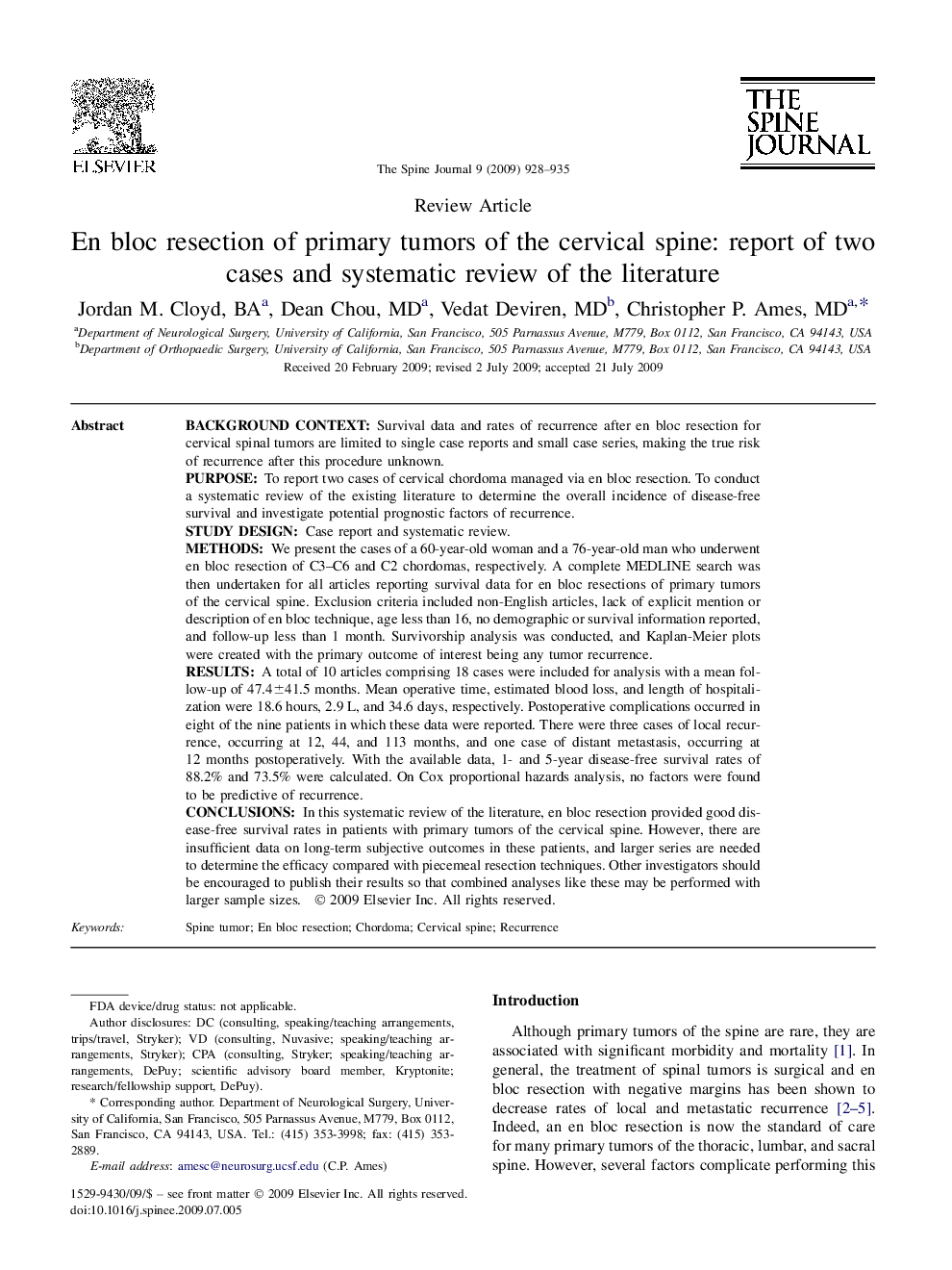| Article ID | Journal | Published Year | Pages | File Type |
|---|---|---|---|---|
| 4099439 | The Spine Journal | 2009 | 8 Pages |
Background contextSurvival data and rates of recurrence after en bloc resection for cervical spinal tumors are limited to single case reports and small case series, making the true risk of recurrence after this procedure unknown.PurposeTo report two cases of cervical chordoma managed via en bloc resection. To conduct a systematic review of the existing literature to determine the overall incidence of disease-free survival and investigate potential prognostic factors of recurrence.Study designCase report and systematic review.MethodsWe present the cases of a 60-year-old woman and a 76-year-old man who underwent en bloc resection of C3–C6 and C2 chordomas, respectively. A complete MEDLINE search was then undertaken for all articles reporting survival data for en bloc resections of primary tumors of the cervical spine. Exclusion criteria included non-English articles, lack of explicit mention or description of en bloc technique, age less than 16, no demographic or survival information reported, and follow-up less than 1 month. Survivorship analysis was conducted, and Kaplan-Meier plots were created with the primary outcome of interest being any tumor recurrence.ResultsA total of 10 articles comprising 18 cases were included for analysis with a mean follow-up of 47.4±41.5 months. Mean operative time, estimated blood loss, and length of hospitalization were 18.6 hours, 2.9 L, and 34.6 days, respectively. Postoperative complications occurred in eight of the nine patients in which these data were reported. There were three cases of local recurrence, occurring at 12, 44, and 113 months, and one case of distant metastasis, occurring at 12 months postoperatively. With the available data, 1- and 5-year disease-free survival rates of 88.2% and 73.5% were calculated. On Cox proportional hazards analysis, no factors were found to be predictive of recurrence.ConclusionsIn this systematic review of the literature, en bloc resection provided good disease-free survival rates in patients with primary tumors of the cervical spine. However, there are insufficient data on long-term subjective outcomes in these patients, and larger series are needed to determine the efficacy compared with piecemeal resection techniques. Other investigators should be encouraged to publish their results so that combined analyses like these may be performed with larger sample sizes.
